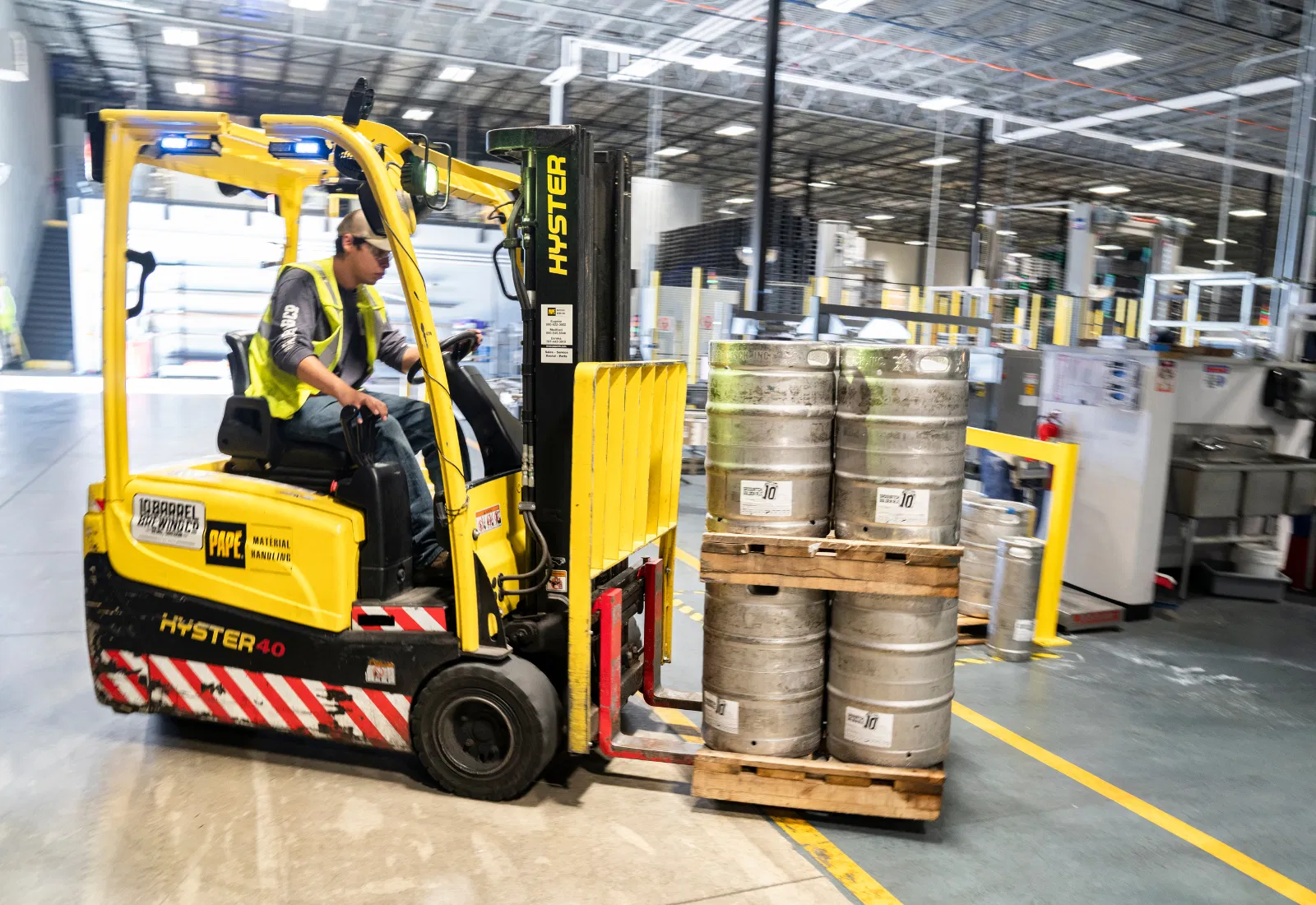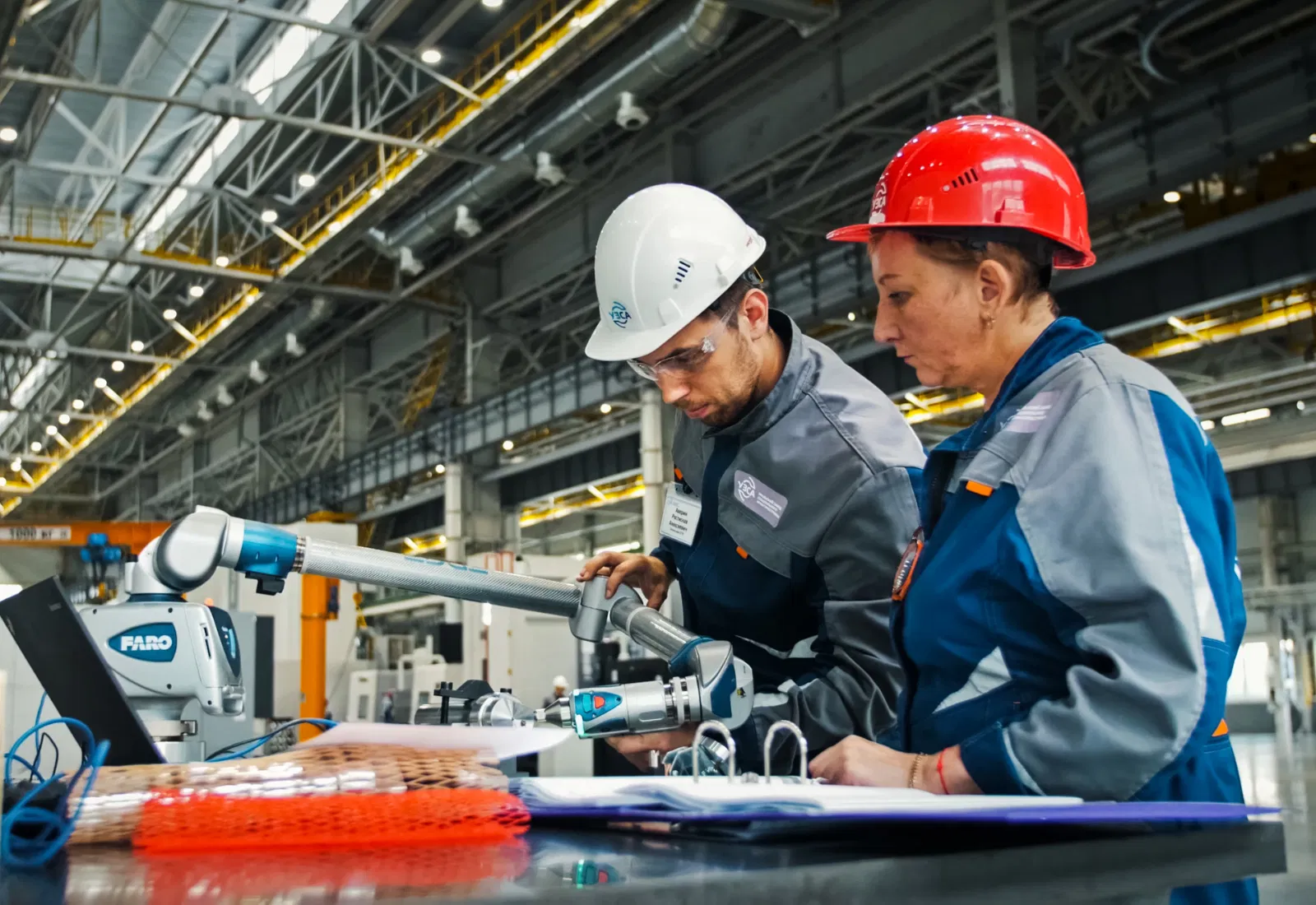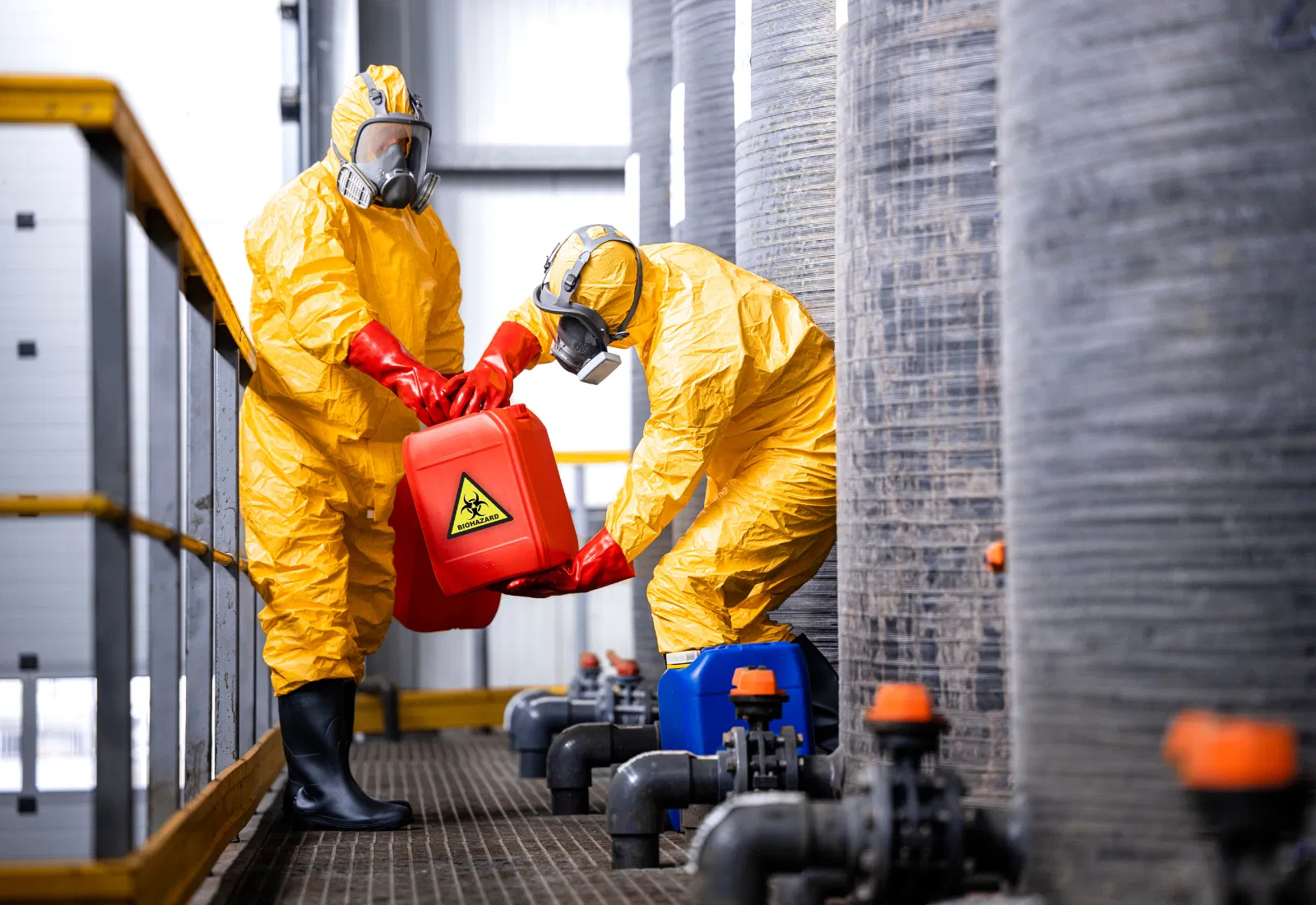
Dec 04, 2025
In this article, we discuss five common risks in factories and practical measures to prevent them. We explain how digital visitor management helps with access control, security, and evacuation in the manufacturing sector.
Written by Jill - Written: August 29, 2025

The manufacturing industry is booming. Despite the difficulties of the post-pandemic period and ongoing geopolitical tensions, global production is growing steadily. According to a new UNIDO report, the production and export of goods increased by 1.3 and 1.4 per cent respectively at the beginning of 2025. Factories are running at full capacity, particularly in China, Europe and North America.
However, with this growth comes increased exposure to risks, such as more movement at gates and loading docks, and more complex shift schedules, which increase the potential danger. At the same time, stricter safety and privacy regulations are in force. In this article, we discuss five common risks in manufacturing companies and offer practical measures to mitigate them. Alongside safety procedures, training and maintenance, digital visitor management (VMS) plays a vital role in your safety processes.
We will cover the following risks:
Read on for practical information about the use and benefits of a visitor management system in the manufacturing industry.
No matter what industry you’re in, automotive, mechanical engineering, chemicals, metals, or pharmaceuticals, workplace safety is the most important concern for every production facility. There are many potential hazards on the production floor, including heavy machinery, internal transport with forklifts and pallet trucks, working at heights, hot surfaces and steam, chemicals, electrical installations, and pressurized pipes.
There may also be exposure to hazardous substances, fumes, or noise. Physical strain from heavy work or repetitive movements also poses risks.
Temporary workers, contractors, and visitors are especially vulnerable in this context. They are less familiar with the site, procedures and rules, may not always recognize signs or color codes, and do not always speak the same language. A seemingly minor mistake, such as taking the wrong route or entering a hazardous area without protective equipment, can quickly lead to an incident.
Want to learn more about how digital visitor management can improve security at your production facility? Read the article.

Of course, you want to avoid emergencies. In a production environment, however, events can unfold quickly. Examples include a fire caused by a machine or electrical fault, a gas leak or chemical spill, smoke development, a small explosion, power failure, flooding, or a medical incident on the work floor.
If an evacuation is necessary, many things must happen simultaneously within a few minutes. Mobile equipment must be stopped, production lines must be shut down, and hazardous areas must be cleared for emergency services. Meanwhile, the outdoor area must not be forgotten, including traffic at the loading docks, shuttling forklifts, and open storage of materials or hazardous substances. In such a busy environment, it is essential to quickly and reliably determine who is still inside and where they are located, including visitors, drivers, and contractors.
Good crisis planning is essential for any manufacturing company. Read more about it in our guide to emergency preparedness.
Cyber incidents pose an ever-increasing threat to businesses. Ransomware can target production facilities at the heart of their operations. As production technology becomes more connected to IT systems, the attack surface expands. A single weak spot can shut down entire production lines or render control and planning systems unusable.
The human element should not be overlooked: phishing and reused passwords remain common entry points. Visitors, drivers, and temporary workers introduce additional risks. External technicians sometimes have temporary access to systems, and visitors use their own laptops and phones. Not everyone is familiar with your rules regarding photography, Wi-Fi, or connecting equipment.
Data is also a target. Consider product recipes, CAD drawings, supplier and customer data, and personnel data. Theft or leaks can lead to financial loss, a competitive disadvantage, reputational damage, reporting obligations, and fines under the General Data Protection Regulation (GDPR).
Why are more and more companies being hit by cyberattacks? How can you prevent your company from becoming the next victim? You can read all about it in this article.
Intruders pose a real risk in production environments. Large sites with multiple gates, entrances, loading docks, and outbuildings can be difficult to oversee. An intruder who slips in unnoticed may be after valuable goods, raw materials, or information such as photos of processes, layouts, or recipes.
How can you keep your business and staff safe? Read more about it in our article on a safe workplace.
Laws and regulations are constantly changing. Safety, quality, and privacy requirements are becoming stricter and can vary by sector. Examples include ISO 45001 (occupational health and safety), ISO 27001 (information security), sector standards such as GMP (Good Manufacturing Practice), BRC (British Retail Consortium), and IFS (International Food Standard), and the GDPR (General Data Protection Regulation) for personal data.
During audits, you must demonstrate who was present, when they were present, and which documents or instructions they signed. Paper forms, emails, and separate spreadsheets make managing this information, monitoring retention periods, and controlling access to data difficult. Errors or omissions can lead to extra work, fines, and reputational damage.

Production companies receive all kinds of visitors every day, including maintenance teams, contractors, loading dock drivers, auditors, and temporary employees. These visitors often enter through multiple gates in shifts and sometimes enter areas where strict safety measures apply.
Traditional paper-based visitor registration cannot control such a flow of visitors. Queues grow, errors creep in, and it is easy to lose track of who is inside. This makes it difficult to determine who is present, including in the event of an evacuation, and to comply with the GDPR.
That is why a structured, centrally controlled approach is needed. A digital visitor management system (VMS) can regulate the entire visitor process in a production facility.
Below is a brief overview of how a visit works:
In a safety-critical production environment where heavy machinery is present, sensitive materials are stored, and strict safety protocols are in place, a digital visitor management system offers many advantages. The most important ones are:
A VMS regulates visitor flow and keeps out unwanted visitors. Only verified visitors can enter within the agreed-upon time slot and zone. Safety instructions can be provided in advance or at check-in so visitors are aware of the basic rules before entering the premises. Furthermore, a VMS provides a constant overview of who is in the building. In an emergency, you have an up-to-date attendance list and can automatically send emergency notifications.
A digital visitor management system streamlines the registration process. Visitors can register in advance and quickly check in via a kiosk upon arrival. Badges print automatically, and NDAs or safety instructions can be integrated into the process. Hosts receive a real-time notification when their visitor arrives. This eliminates duplicate work at the gate or reception desk, allowing receptionists and doormen to focus on their core tasks.
For visitors, nothing beats a smooth and pleasant welcome. A VMS ensures just that. Your guests receive all the necessary information in advance and can quickly check in on site in their own language. Meanwhile, their host automatically receives a notification. Suppliers and drivers experience less waiting time and greater clarity about when and where they are expected. Customers and other visitors enjoy a professional, efficient reception without long lines or unnecessary questions. The result is a positive first impression that aligns with a safe, organized production environment.
Manufacturing companies must demonstrate who entered the premises, when they entered, and which instructions or documents they processed. A VMS can simplify this administrative process. Visitor data is securely stored in the cloud. This allows you to generate audit-ready reports in just a few minutes. In accordance with the GDPR, the data is automatically deleted once the retention period has expired.
A digital visitor management system eliminates manual tasks from the visitor process. This allows receptionists and doormen to spend less time on repetitive tasks and be deployed more efficiently. Traffic flow at the reception area, gate, and loading dock improves, reducing the need for peak staffing. Since forms, NDAs, and instructions are handled digitally, paper and archiving costs are also lower. Finally, consistent registration and audit-ready data reduce the risk of fines.
In production environments, danger lurks around every corner. Some of the most significant risks include workplace safety, emergencies, cyber threats, intruders, and regulatory compliance. A visitor management system can help you mitigate these risks.
Pre-registration and check-in streamline reception; access rights per zone and time period keep unauthorized persons out; multilingual safety instructions reduce the risk of incidents; an up-to-date attendance list supports evacuations; and a complete audit trail demonstrates your adherence to the rules.
To see how digital visitor management can benefit your production facility, try Vizito for free for 14 days. Chat with us or book a demo to learn more.